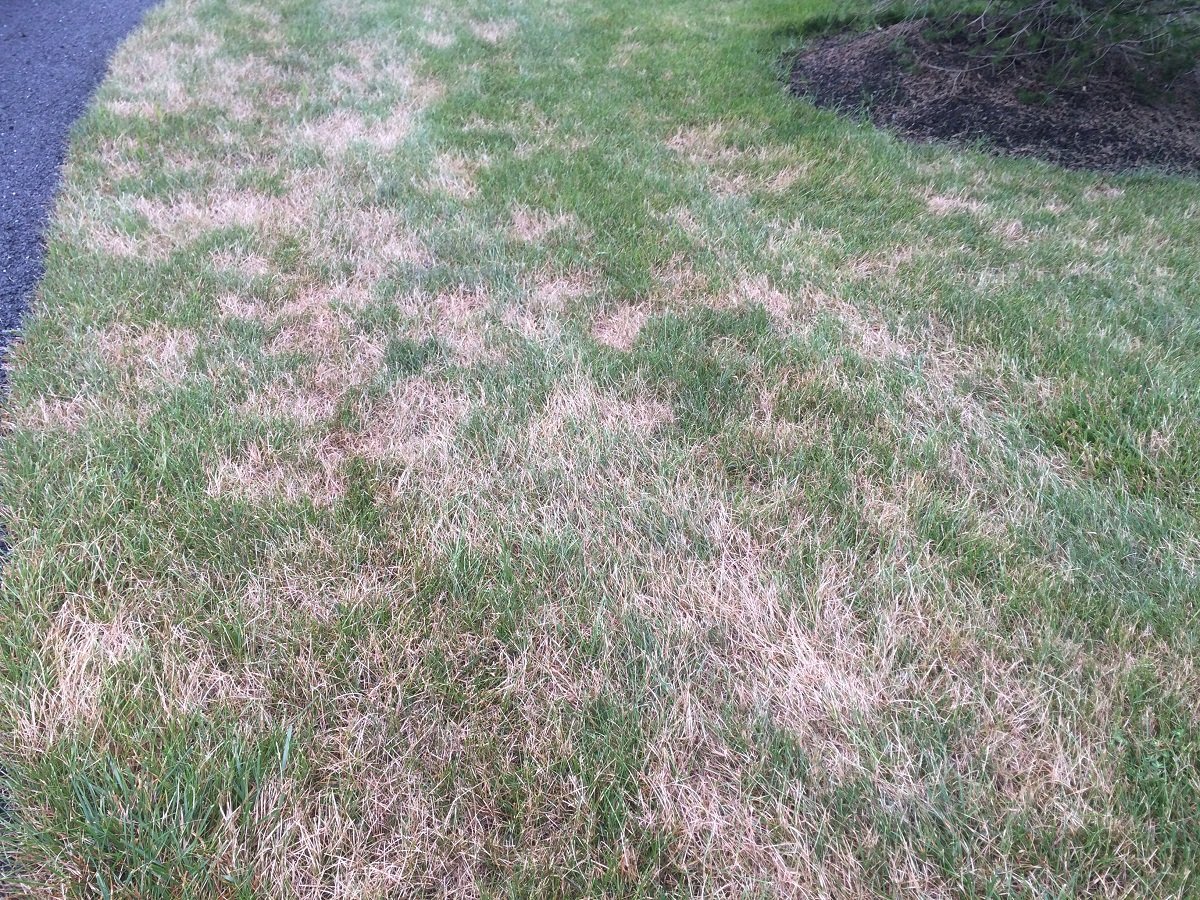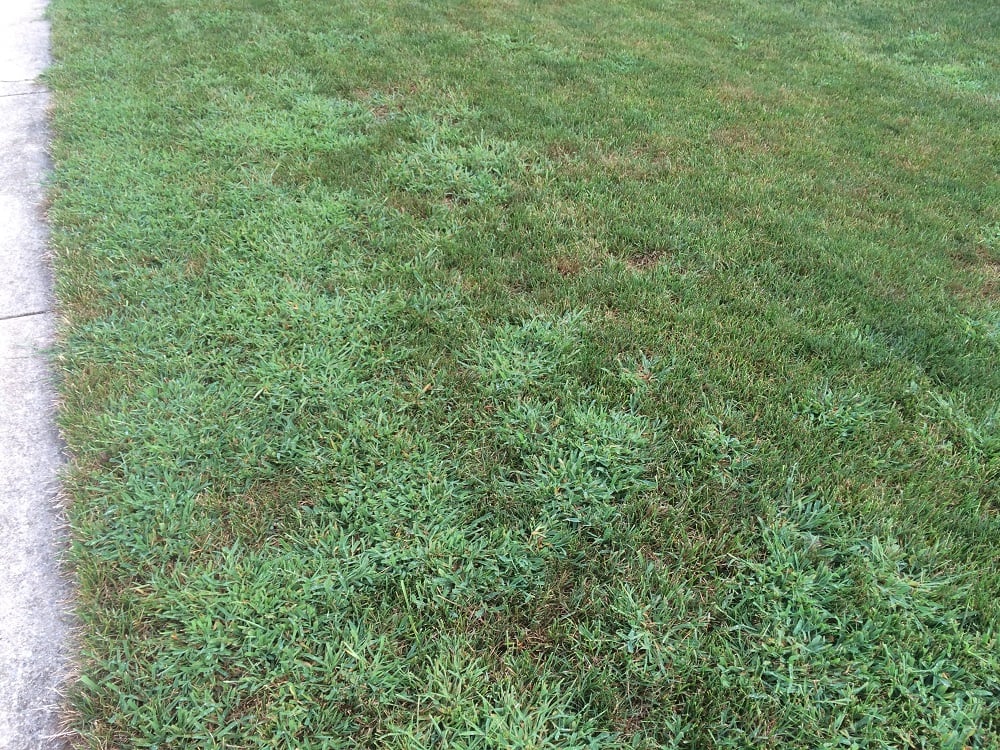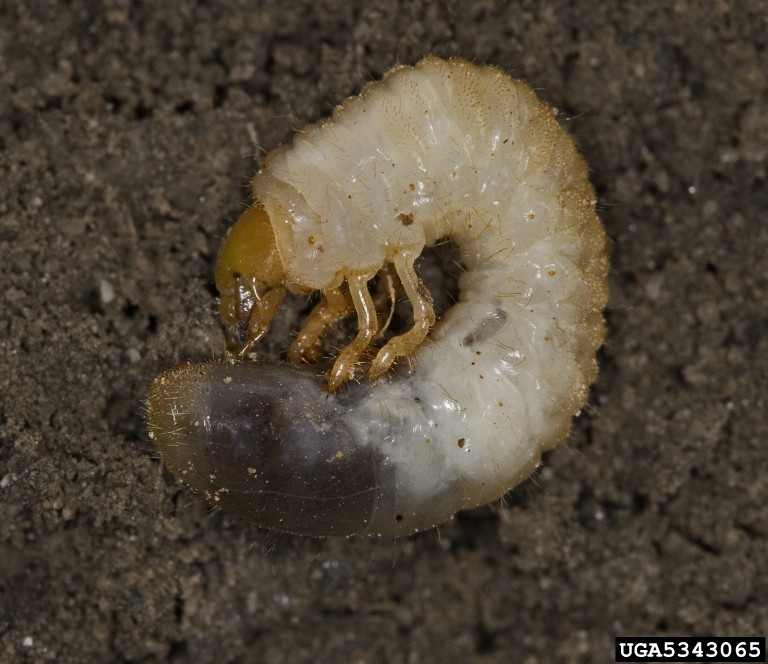What's Wrong With My Lawn? 5 Common Lawn Problems (and Solutions) for Central & Southern MD
Dealing with lawn issues can certainly be frustrating, especially when you don’t know what’s going on. One day, your lawn may look just fine. Then life gets busy. And a few days later, you’re finally spending time in your lawn again and you notice things don’t look quite right.
And it’s not always just weeds that are the enemy. You have to keep your eye out for pests, fungal diseases, and even drought.
Got a strange brown spot or mysterious dry patch plaguing your lawn? Have no idea what kind of splotchy monster is starting to take over? No sweat. While well-established and maintained lawns are quite resilient, even the best kept lawn can be vulnerable. And you just want it to look good. We understand.
And we’re here to help. Here are 5 common lawn problems that might mean your yard is experiencing some trouble and how to recognize, prevent and treat the related causes.
5 Common Lawn Problems
You want to do what’s right for your lawn, especially when it’s not as green and weed-free as you hoped it would be.
But this can be hard when many of today’s symptoms can look very similar to each other, meaning it’s unfortunately very easy to make an accidental misdiagnosis. A brown patch, for instance, could be drought, a bare patch, or an actual turf disease called brown patch. A trained eye can spot the differences and accurately identify lawn problems.
Tackling the wrong issue with the wrong solution could wind up making it worse instead of fixing it. This is why a professional diagnosis is critical. You don’t want to waste time and money; we wouldn’t want that either.
Here are some of the worst offenders and what they might mean to help you understand more about the lawn you love.
1. Bare Spots
You may have heard the advice that lawns are best built in the fall. Lawns are normally starting to come back in autumn after the heat, humidity, and dry summer weather have eased up.
But this is when some lawn problems can reveal themselves. You might notice some bare spots emerge. When summer annual weeds begin to decline and die out, they leave bare spots in your yard. It can look pretty patchy, depending on the extent of your summer weed infestation. Obviously, tackling those summer weeds is a strategy to follow earlier in the year to prevent those bare spots in the first place.
Obviously, tackling those summer weeds is a strategy to follow earlier in the year to prevent those bare spots in the first place.
But if you see some spots in the fall months, the solution is to aerate and overseed. Aeration is the process of using an aerator to pull small soil plugs or cores from your lawn. This allows your lawn to breathe after being continuously compacted from rain, foot traffic, and just regular activity. Overseeding is the process of adding seed to your lawn to fill in bare or thin spots. Done immediately after aeration, overseeding improves the seeds’ chances of germination.
2. Lawn Patches
Patches may work on your jeans, but they don’t look so trendy in your lawn.
There are a number of lawn diseases that can cause patches, lesions, or spots on the grass. Others may just show up as an overall decline in lawn health that could reveal themselves via lawn color changes.
While some turf diseases can be similar, others warrant different treatments. Many times, proper fertilization, pH correction, and irrigation will combat turf diseases on their own. But when the night time temperatures stay in the high 60s or above and the daytime humidity is high, this creates a breeding ground for fungal diseases. A lawn ravaged by a turf disease has two options: grow out of it or receive fungicide treatments.
A lawn ravaged by a turf disease has two options: grow out of it or receive fungicide treatments.
Fungicide treatments are normally an add-on to your basic lawn care program. Normally, it takes about three treatments over the course of the disease time frame to manage these lawn problems. In areas that are prone to disease, it’s best to start treatments preventively in mid-May so turf diseases don’t have time to take hold.
3. Grassy Weeds
Maybe amidst the lush green lawn you love so much, you notice spiky clumps of grass that look out of place.
Use This Lawn Weed ID Tool to Spot Weeds in Your Lawn
That’s because they are. These are grassy weeds, ranging from the detested crabgrass that arrives in spring to Dallisgrass and Bermudagrass, among others.  The best way to get rid of crabgrass is with a preventive treatment in the spring. Some other summer lawn grassy weeds are best tackled with a nonselective herbicide. In addition to these tactics, the best way to keep weeds at bay is to keep your lawn in good health with fertilization, aeration and overseeding, so it can grow thick and strong, repelling the worst these lawn problems can do.
The best way to get rid of crabgrass is with a preventive treatment in the spring. Some other summer lawn grassy weeds are best tackled with a nonselective herbicide. In addition to these tactics, the best way to keep weeds at bay is to keep your lawn in good health with fertilization, aeration and overseeding, so it can grow thick and strong, repelling the worst these lawn problems can do.
4. Loose Turf
If you walk across your lawn, you might notice a spot that is losing color or maybe there are some strange circular discolorations. And when you walk on it, it might feel squishy.
If you would try and pull up this section, you might see that it lifts up like a carpet. That is a big sign you have a subsurface-feeding lawn grub. These C-shaped, white grubs are eating away at the roots of your lawn.  These hungry lawn problems can be highly destructive and have the power to do quite a bit of damage without you even knowing it because they’re hard to see.
These hungry lawn problems can be highly destructive and have the power to do quite a bit of damage without you even knowing it because they’re hard to see.
The key to control is to catch grubs in their early stages or even before they hatch so they can’t cause too much damage. This means an insecticide treatment in May or June that is typically an add-on service to your regular lawn care program.
5. Browning Lawn
Sometimes brown spots can appear in your lawn. This can happen for a variety of reasons.
Many times, it’s the result from drought from a lack of rain or irrigation. Other times, it’s a sign of heavily compacted turf that needs aeration. Deeply compacted lawns can’t absorb water like they need to.  To fix this lawn problem, adequate water in the summer and aeration and overseeding in the fall can bring our lawn back to life.
To fix this lawn problem, adequate water in the summer and aeration and overseeding in the fall can bring our lawn back to life.
Don’t Let Lawn Problems Ruin Your Day
Taking care of a lawn isn’t always simple. You have to know about the grass species you have, as well as proper mowing, watering, fertilization, weed control, and other treatments and services.
It can become confusing and time-consuming. We get it; no one wants to waste their time, especially if they find out they’re addressing the wrong issue.
If you find yourself looking at your Central or Southern Maryland grass and asking yourself, “What’s wrong with my lawn?” maybe it’s time to have a lawn care professional take a closer look.
Want to elevate your lawn’s health and eliminate confusing spots and patches? Natural Green Systems can help. Get started today with a free quote. Together, we’ll customize a plan that gives your lawn the boost it needs.
Image Source: Grub
Dealing with lawn issues can certainly be frustrating, especially when you don’t know what’s going on. One day, your lawn may look just fine. Then life gets busy. And a few days later, you’re finally spending time in your lawn again and you notice things don’t look quite right.
And it’s not always just weeds that are the enemy. You have to keep your eye out for pests, fungal diseases, and even drought.
Got a strange brown spot or mysterious dry patch plaguing your lawn? Have no idea what kind of splotchy monster is starting to take over? No sweat. While well-established and maintained lawns are quite resilient, even the best kept lawn can be vulnerable. And you just want it to look good. We understand.
And we’re here to help. Here are 5 common lawn problems that might mean your yard is experiencing some trouble and how to recognize, prevent and treat the related causes.
5 Common Lawn Problems
You want to do what’s right for your lawn, especially when it’s not as green and weed-free as you hoped it would be.
But this can be hard when many of today’s symptoms can look very similar to each other, meaning it’s unfortunately very easy to make an accidental misdiagnosis. A brown patch, for instance, could be drought, a bare patch, or an actual turf disease called brown patch. A trained eye can spot the differences and accurately identify lawn problems.
Tackling the wrong issue with the wrong solution could wind up making it worse instead of fixing it. This is why a professional diagnosis is critical. You don’t want to waste time and money; we wouldn’t want that either.
Here are some of the worst offenders and what they might mean to help you understand more about the lawn you love.
1. Bare Spots
You may have heard the advice that lawns are best built in the fall. Lawns are normally starting to come back in autumn after the heat, humidity, and dry summer weather have eased up.
But this is when some lawn problems can reveal themselves. You might notice some bare spots emerge. When summer annual weeds begin to decline and die out, they leave bare spots in your yard. It can look pretty patchy, depending on the extent of your summer weed infestation. Obviously, tackling those summer weeds is a strategy to follow earlier in the year to prevent those bare spots in the first place.
Obviously, tackling those summer weeds is a strategy to follow earlier in the year to prevent those bare spots in the first place.
But if you see some spots in the fall months, the solution is to aerate and overseed. Aeration is the process of using an aerator to pull small soil plugs or cores from your lawn. This allows your lawn to breathe after being continuously compacted from rain, foot traffic, and just regular activity. Overseeding is the process of adding seed to your lawn to fill in bare or thin spots. Done immediately after aeration, overseeding improves the seeds’ chances of germination.
2. Lawn Patches
Patches may work on your jeans, but they don’t look so trendy in your lawn.
There are a number of lawn diseases that can cause patches, lesions, or spots on the grass. Others may just show up as an overall decline in lawn health that could reveal themselves via lawn color changes.
While some turf diseases can be similar, others warrant different treatments. Many times, proper fertilization, pH correction, and irrigation will combat turf diseases on their own. But when the night time temperatures stay in the high 60s or above and the daytime humidity is high, this creates a breeding ground for fungal diseases. A lawn ravaged by a turf disease has two options: grow out of it or receive fungicide treatments.
A lawn ravaged by a turf disease has two options: grow out of it or receive fungicide treatments.
Fungicide treatments are normally an add-on to your basic lawn care program. Normally, it takes about three treatments over the course of the disease time frame to manage these lawn problems. In areas that are prone to disease, it’s best to start treatments preventively in mid-May so turf diseases don’t have time to take hold.
3. Grassy Weeds
Maybe amidst the lush green lawn you love so much, you notice spiky clumps of grass that look out of place.
Use This Lawn Weed ID Tool to Spot Weeds in Your Lawn
That’s because they are. These are grassy weeds, ranging from the detested crabgrass that arrives in spring to Dallisgrass and Bermudagrass, among others.  The best way to get rid of crabgrass is with a preventive treatment in the spring. Some other summer lawn grassy weeds are best tackled with a nonselective herbicide. In addition to these tactics, the best way to keep weeds at bay is to keep your lawn in good health with fertilization, aeration and overseeding, so it can grow thick and strong, repelling the worst these lawn problems can do.
The best way to get rid of crabgrass is with a preventive treatment in the spring. Some other summer lawn grassy weeds are best tackled with a nonselective herbicide. In addition to these tactics, the best way to keep weeds at bay is to keep your lawn in good health with fertilization, aeration and overseeding, so it can grow thick and strong, repelling the worst these lawn problems can do.
4. Loose Turf
If you walk across your lawn, you might notice a spot that is losing color or maybe there are some strange circular discolorations. And when you walk on it, it might feel squishy.
If you would try and pull up this section, you might see that it lifts up like a carpet. That is a big sign you have a subsurface-feeding lawn grub. These C-shaped, white grubs are eating away at the roots of your lawn.  These hungry lawn problems can be highly destructive and have the power to do quite a bit of damage without you even knowing it because they’re hard to see.
These hungry lawn problems can be highly destructive and have the power to do quite a bit of damage without you even knowing it because they’re hard to see.
The key to control is to catch grubs in their early stages or even before they hatch so they can’t cause too much damage. This means an insecticide treatment in May or June that is typically an add-on service to your regular lawn care program.
5. Browning Lawn
Sometimes brown spots can appear in your lawn. This can happen for a variety of reasons.
Many times, it’s the result from drought from a lack of rain or irrigation. Other times, it’s a sign of heavily compacted turf that needs aeration. Deeply compacted lawns can’t absorb water like they need to.  To fix this lawn problem, adequate water in the summer and aeration and overseeding in the fall can bring our lawn back to life.
To fix this lawn problem, adequate water in the summer and aeration and overseeding in the fall can bring our lawn back to life.
Don’t Let Lawn Problems Ruin Your Day
Taking care of a lawn isn’t always simple. You have to know about the grass species you have, as well as proper mowing, watering, fertilization, weed control, and other treatments and services.
It can become confusing and time-consuming. We get it; no one wants to waste their time, especially if they find out they’re addressing the wrong issue.
If you find yourself looking at your Central or Southern Maryland grass and asking yourself, “What’s wrong with my lawn?” maybe it’s time to have a lawn care professional take a closer look.
Want to elevate your lawn’s health and eliminate confusing spots and patches? Natural Green Systems can help. Get started today with a free quote. Together, we’ll customize a plan that gives your lawn the boost it needs.
Image Source: Grub
Share This
Topics: Weeds, Pest Control, Lawn Care
Get a Healthy Lawn & Say Goodbye to Pests


